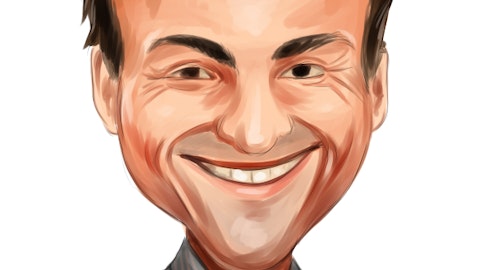Lenovo Group Limited (ADR) (NASDAQOTH:LNVGY) acquired IBM’s personal computer business in 2005 for $1.25 billion, instantly skyrocketing the Chinese computer maker to the #3 spot in worldwide computer production by volume. A big part of that deal was the ThinkPad brand, which Lenovo founder Liu Chuanzhi pointed to as one of the biggest advantages of his company’s acquisition.

Last quarter, Lenovo Group Limited (ADR) (NASDAQOTH:LNVGY) overtook Hewlett-Packard Company (NYSE:HPQ) as the world’s biggest computer maker. One of the biggest drivers of the company’s growth is enterprise sales, and although the ThinkPad is growing outdated, business customers are notoriously averse to innovation. So how can one of the world’s most successful laptops evolve without changing too much?
Living in the past
The ThinkPad’s premier T Series is one of its most popular brands — a sturdy, reliable group of laptops marketed toward corporate and enterprise users. Lenovo Group Limited (ADR) (NASDAQOTH:LNVGY) hasn’t changed much since it acquired the ThinkPad, except to stretch the screen to the widescreen resolution that has become the norm in the laptop industry.
Many of the T Series features seem a bit antiquated. A small, quaintly titled “ThinkLight” illuminates the keyboard at the push of a button. A little red nub embedded in the center of the keyboard provides a rough approximation of a mouse. And the the physical metal latch looks positively steampunk compared to the magnetic closures of many modern laptops.
So Lenovo Group Limited (ADR) (NASDAQOTH:LNVGY)’s newest ThinkPad, the T431s, is a significant shift for the PC maker. Although it falls into the UltraBook class, it points toward the ThinkPad’s future, and reveals a company that is comfortable with their flagship computer but not content to forgo innovation.
What’s new
Bowing to market pressure, the T431s incorporates a new single-button multi-touch trackpad. Gone is the physical latch in favor of a magnetic one. And the T431s is missing that tiny flashlight — backlit keys now provide a more modern means of illumination.
These changes are positive and shouldn’t bother too many loyal users. The bigger, simpler trackpad provides the same functionality with greater ease-of-use. The magnetic latch is one less breakable part to send the laptop to your company’s IT department. And the backlit keyboard is positively premium compared to the yellowed ThinkLight.
What stayed the same
That maddening red nub hasn’t left, and neither have the plentiful ports. The T431s packs plentiful USB ports, and even a VGA jack. That connector–superseded by HDMI in most modern displays–is nonetheless essential for businesspeople who need to jack into older projectors at upgrade-wary customer sites.
It’s that kind of consideration that makes this redesign a thoughtful one. The VGA is thick and unappealing — no good for a thin and light ultrabook. But a company unwilling to sacrifice such a feature is one that deeply understands its target market.
The competition
Lenovo Group Limited (ADR) (NASDAQOTH:LNVGY)’s careful approach to innovation differentiates it from Apple Inc. (NASDAQ:AAPL), which sacrificed an optical drive in the MacBook Air so early that they had to build a new feature to accommodate the change.
Apple Inc. (NASDAQ:AAPL) has never focused too strongly on the enterprise market, although its recent focus on security and encryption might indicate a change of interest. If so, Apple Inc. (NASDAQ:AAPL) could represent a stronger challenge to Lenovo, specifically in the mobile market, where it still holds sway.
Lenovo Group Limited (ADR) (NASDAQOTH:LNVGY)’s own ventures into tablets have been reasonably successful, but with a refresh of the iPad Mini likely this year, Apple stands to reestablish its foothold as the king of mobile — and as a rocket ship of a stock.
And the aforementioned Hewlett-Packard Company (NYSE:HPQ) still represents a strong contender, although the company is reeling in the face of dwindling PC sales. Hewlett-Packard Company (NYSE:HPQ) has been quick to jump on trends, as with the netbook, but has not been successful in sustaining its market share, experiencing a precipitous 24% drop in revenue last quarter.
The company lacks an enterprise laptop with the kind of brand strength that ThinkPad can claim. Its recent refresh of the ProBook line looks promising, but past failures make HP a shaky investment prospect.
The bottom line
Unlike many of its competitors, Lenovo has a deep understanding of the enterprise customer. The ThinkPad line benefits from strong name recognition and a careful managing hand in Lenovo — which mixes innovation and tradition in the perfect proportions for its target market.
The company managed to stay flat in sales last quarter — in contrast with many of its competitors — and thus represents a strong buy recommendation.
The article Lenovo ThinksFuture originally appeared on Fool.com is written by Steven Yenzer.
Copyright © 1995 – 2013 The Motley Fool, LLC. All rights reserved. The Motley Fool has a disclosure policy.
